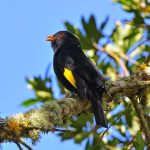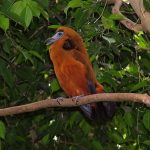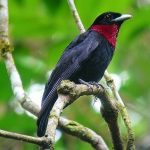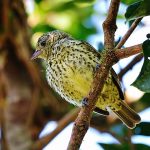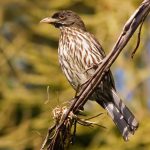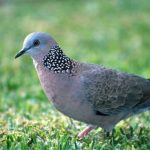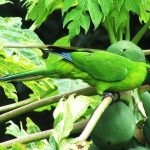Bearded bellbird
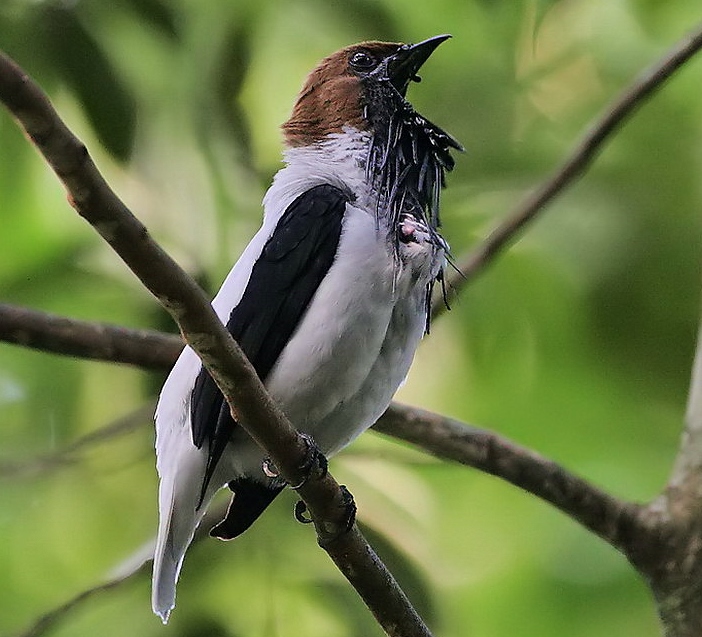
 |
| Photo by Steve Garvie (Birds of the World) |
Common name:
bearded bellbird (en); araponga-do-nordeste (pt); araponga barbu (fr); campanero barbudo (es); bartkotinga (de)
Taxonomy:
Order Passeriformes
Family Cotingidae
Range:
This species is found in two disjunct subspecies. P. a. carnobara is found in Venezuela, Trinidad, Guyana and marginally into northern Brazil, while P. a. averano is found in north-eastern Brazil, from Maranhão to Alagoas and Bahía.
Size:
These birds 27-29 cm long and weigh 127-178 g.
Habitat:
The bearded bellbird is found in tropical rainforests and adjacent tall second growth. To a lesser extent also in dry forests and caatinga. They are present from sea level up to an altitude of 1.900 m.
Diet:
They mainly eat fruits and berries, especially those of Lauraceae, Burseraceae, Araliaeae and Melastomataceae.
Breeding:
Bearded bellbirds breed in April-November, varying between different parts of their range. They are polygamous, with the males performing displays in a lek and mating with several females, after which they have no further part in the reproductive process. The female builds the nest, a shallow cup made of fine twigs, placed in a tall tree up to 15 m above the ground. There she lays a single buff-coloured egg with dark brown markings, which she incubated alone for 23 days. The chicks fledge 30-33 days after hatching.
Conservation:
IUCN status – LC (Least Concern)
This species has a large breeding range but is is described as uncommon and patchily distributed. The population has declined locally in north-eastern Brazil as a result of extensive trapping for the cage bird trade and habitat destruction, but the bearded bellbird is not considered threatened at present.


